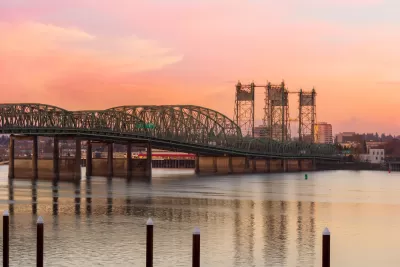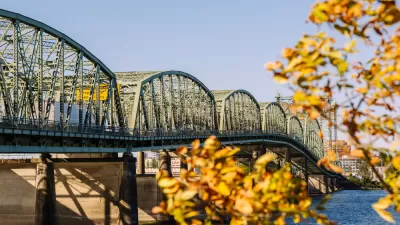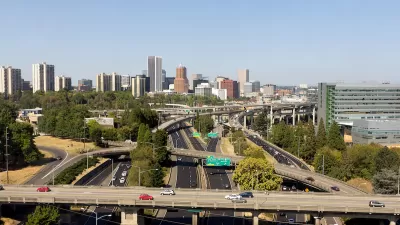2021 will be a big year for planning on the Interstate Bridge Replacement project, née Columbia River Crossing, that will connect Washington and Oregon across the Columbia River.

Officials from the states of Washington and Oregon are dusting off ambitions to replace an Interstate 5 bridge across the Columbia River. A previous version of the plan, known as the Columbia River Crossing, was killed in 2014, but not before both states spent $190 million over a decade of work on the project.
Planetizen has used the "back from the dead" hook in the headline for this article on more than once occasion regarding this project, first as officials began to re-examine and re-advocate for the project in early 2017. Oregon took a substantive step toward rejuvenating the project in August 2019. The project was on the fast track by September 2019.
The story in 2020 is told by Ryan Packer, who first details the rare collection of opposition forces that killed the project in 2015 and lists the key features of the Columbia River Crossing project of the previous decade, which would have spent $3.4 billion to increase the freeway's capacity from six to ten lanes and add seven "optimized" interchanges on either side of the river.
The project now has a new name, the Interstate Bridge Replacement (IBR) program, but it's cost estimates are still based on the old project, reports Packer, so there are still numerous questions about whether the project will expand the freeway, where, and by how much. Packer's deep reporting offers insight from leading officials about which way the project might be headed in this new iteration.
Packer notes that the question of whether the states will have to pay $140 million back to the federal government is motivating some of the action on the project, positioning 2021 as a key year for observers to monitor the project.
FULL STORY: Columbia River Crossing Freeway Project Is Back

Maui's Vacation Rental Debate Turns Ugly
Verbal attacks, misinformation campaigns and fistfights plague a high-stakes debate to convert thousands of vacation rentals into long-term housing.

Planetizen Federal Action Tracker
A weekly monitor of how Trump’s orders and actions are impacting planners and planning in America.

San Francisco Suspends Traffic Calming Amidst Record Deaths
Citing “a challenging fiscal landscape,” the city will cease the program on the heels of 42 traffic deaths, including 24 pedestrians.

Defunct Pittsburgh Power Plant to Become Residential Tower
A decommissioned steam heat plant will be redeveloped into almost 100 affordable housing units.

Trump Prompts Restructuring of Transportation Research Board in “Unprecedented Overreach”
The TRB has eliminated more than half of its committees including those focused on climate, equity, and cities.

Amtrak Rolls Out New Orleans to Alabama “Mardi Gras” Train
The new service will operate morning and evening departures between Mobile and New Orleans.
Urban Design for Planners 1: Software Tools
This six-course series explores essential urban design concepts using open source software and equips planners with the tools they need to participate fully in the urban design process.
Planning for Universal Design
Learn the tools for implementing Universal Design in planning regulations.
Heyer Gruel & Associates PA
JM Goldson LLC
Custer County Colorado
City of Camden Redevelopment Agency
City of Astoria
Transportation Research & Education Center (TREC) at Portland State University
Jefferson Parish Government
Camden Redevelopment Agency
City of Claremont





























